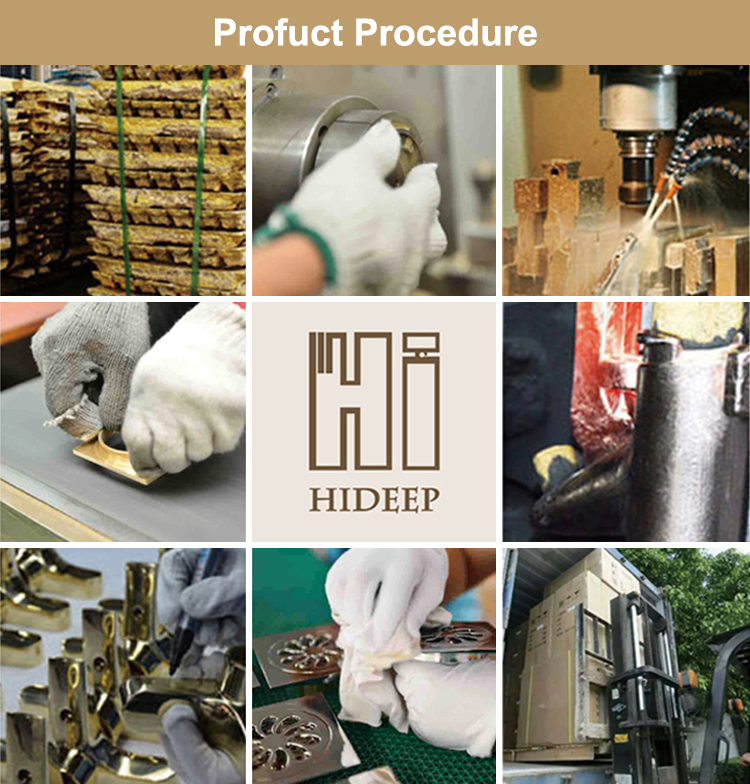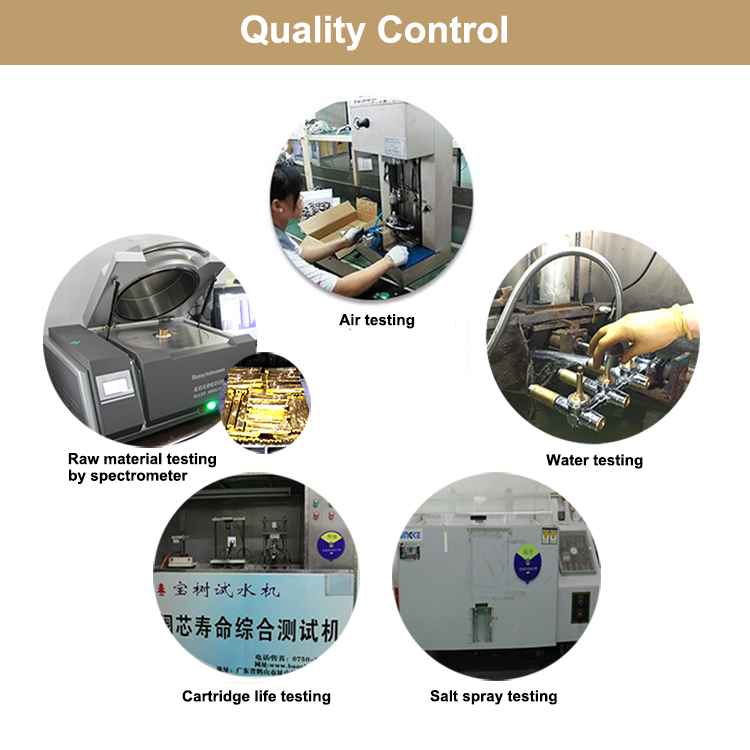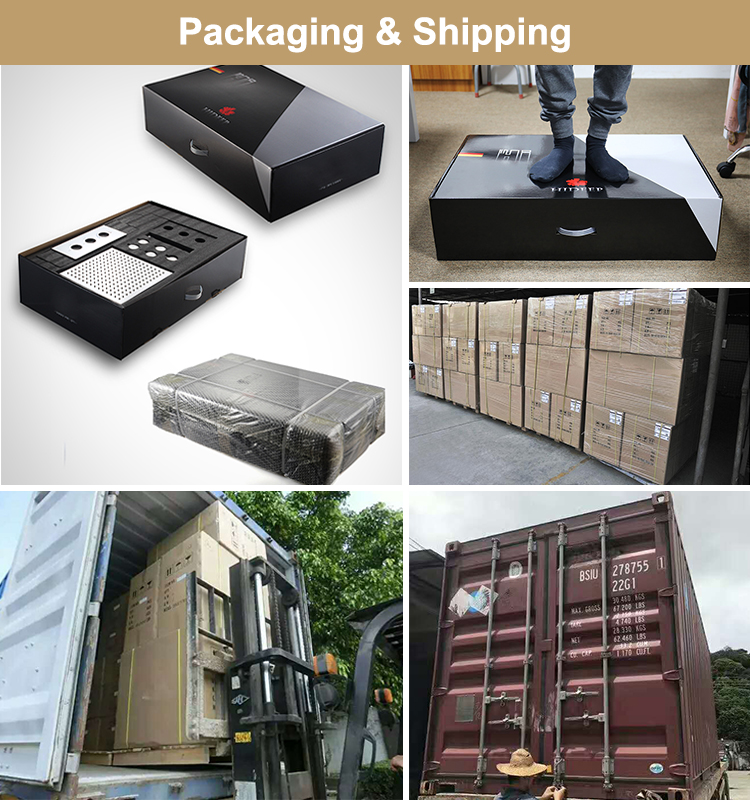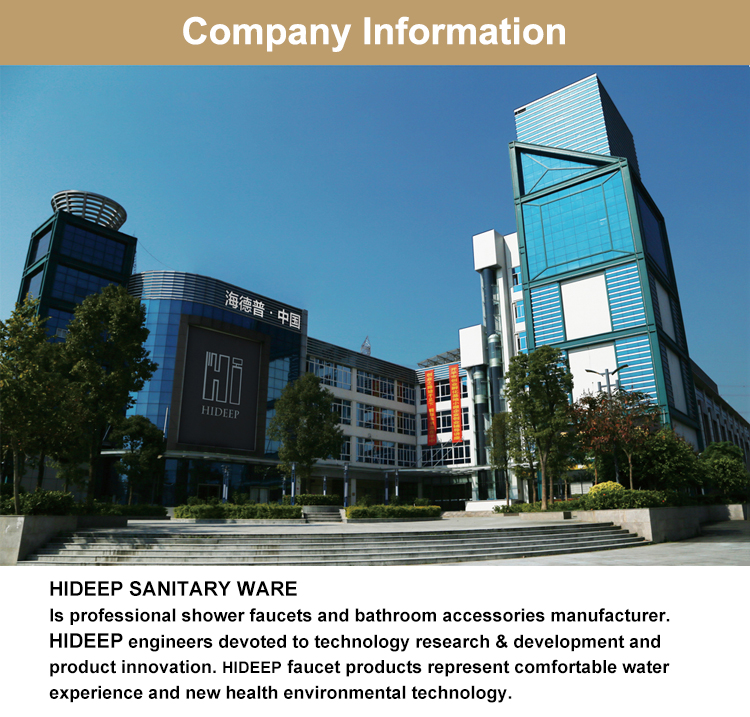The principle of extrusion molding enters the barrel from the hopper, and under the action of the rotation of the screw, it is transported forward to the feeding section through the frictional shearing action of the inner wall of the cylinder and the surface of the screw, where the loose solid is conveyed forward and compacted at the same time; The depth of the groove becomes shallower and further compacted. At the same time, the outside of the barrel is heated and the screw and the inner wall of the barrel are frictionally sheared. The temperature of the material begins to melt and the compression section ends. The homogenization section makes the material uniform, constant temperature, quantitative, The melt is extruded at a constant pressure, formed into a machine head, and shaped to obtain a product.
1. Extrusion method
According to plasticization method: dry extrusion and wet extrusion
Pressurized: continuous extrusion and intermittent extrusion
2, characteristics
Continuous production, high efficiency, simple operation and wide application range
Extrusion equipment
1, the host
Extrusion system: consists of a screw and a barrel, which is a key part of the extruder. Its role is to plasticize the material, quantitative, constant pressure, constant temperature extrusion melt
Drive system: drive the screw to increase the required moment and torque
Heating and cooling systems: ensure that the temperature of the plastics and extrusion systems meets the process requirements during the molding process
2, auxiliary machine
Composed of a machine head, a sizing device, a cooling device, a traction device, a winding device, and a cutting
3. Control system
Composed of electrical appliances, instruments and actuators
Function: control the main and auxiliary electromechanical "target=_blank> machine motor to meet the required speed and power; control the temperature, pressure and flow of the main and auxiliary machines to ensure the quality of the product; realize the automatic control of the extrusion unit to ensure the main and auxiliary machines Coordinated operation.
Overview of the Extruder The mainframe of the plastic extruder is an extruder consisting of an extrusion system, a drive train and a heating and cooling system.
1. Extrusion system The extrusion system includes a screw, a barrel, a hopper, a machine head, and a mold. The plastic is plasticized into a uniform melt by an extrusion system, and is continuously continuous by the screw under the pressure established in the process. Extruder head.
(1) Screw: It is the most important part of the extruder. It is directly related to the application range and productivity of the extruder. It is made of high strength and corrosion resistant alloy steel.
(2) Barrel: It is a metal cylinder, which is generally made of alloy steel with high heat resistance, high compressive strength, strong wear resistance and corrosion resistance or composite steel pipe lined with alloy steel. The barrel is matched with the screw to achieve pulverization, softening, melting, plasticizing, venting and compacting of the plastic, and continuously and uniformly conveying the rubber to the molding system. The length of the general barrel is 15 to 30 times its diameter, so that the plastic is fully heated and fully plasticized.
(3) Hopper: The bottom of the hopper is equipped with a cutting device to adjust and cut the flow. The side of the hopper is equipped with a sight hole and a calibration metering device.
(4) Handpiece and mold: The machine head is composed of an alloy steel inner sleeve and a carbon steel jacket, and a molding die is arranged in the machine head. The function of the machine head is to transform the rotating plastic melt into a parallel linear motion, which is evenly and smoothly introduced into the mold sleeve and imparts the necessary molding pressure to the plastic. The plastic is plasticized and compacted in the barrel, and the porous filter plate flows into the head forming mold through the neck of the head through a certain flow path, and the core mold sleeve is properly matched to form an annular gap with a decreasing cross section, so that the plastic melt is in the A continuous dense tubular coating is formed around the core. In order to ensure the plastic flow path in the machine head is reasonable, and eliminate the dead angle of the accumulated plastic, a shunt sleeve is often placed. In order to eliminate the pressure fluctuation during plastic extrusion, a pressure equalizing ring is also provided. A mold correction and adjustment device is also mounted on the handpiece to facilitate adjustment and correction of the concentricity of the core and the mold sleeve.
The extruder divides the machine head into a bevel head (120o angle) and a right angle head according to the angle between the flow direction of the head and the center line of the screw. The outer casing of the machine head is fixed on the fuselage by bolts. The mold in the machine head has a core sitting and is fixed to the inlet port of the machine head with a nut. The front of the core seat is equipped with a core, a core and a core holder. The center has a hole for passing the core wire; a pressure equalizing ring is arranged at the front of the machine head for equalizing the pressure; the extrusion molding part is composed of a die sleeve seat and a mold sleeve, and the position of the mold sleeve can be adjusted by the bolt through the support In order to adjust the relative position of the die sleeve to the core, it is convenient to adjust the uniformity of the thickness of the extrusion layer. The outside of the machine head is equipped with a heating device and a temperature measuring device.
2. The function of the transmission system is to drive the screw. The torque and speed required by the supply screw during the extrusion process are usually composed of a motor, a reducer and a bearing.
3. Heating and cooling The heating and cooling are necessary conditions for the plastic extrusion process.
(1) Nowadays, extruders usually use electric heating, which is divided into resistance heating and induction heating. The heating sheets are installed in the fuselage, neck and nose parts. The heating device heats the plastic in the cylinder from the outside to raise the temperature to achieve the temperature required for the process operation.
(2) The cooling device is set to ensure that the plastic is in the temperature range required by the process. Specifically, it is to eliminate the excess heat generated by the shear friction of the screw rotation, so as to avoid the decomposition of the plastic, the scorch or the setting of the plastic is difficult. The barrel cooling is divided into two types: water cooling and air cooling. Generally, small and medium-sized extruders are suitable for air cooling, while large ones are mostly water-cooled or combined with two forms of cooling. The screw cooling mainly uses central water cooling to increase the material solids conveying rate. Stabilize the amount of glue and improve the quality of the product; however, the cooling at the hopper is to strengthen the conveying effect on the solid material, prevent the plastic particles from sticking to the material block due to the temperature rise, and the second is to ensure the normal operation of the transmission part.
Second, auxiliary equipment
The auxiliary machine of the plastic extrusion unit mainly includes a pay-off device, a straightening device, a preheating device, a cooling device, a traction device, a metering device, a spark testing machine, and a wire take-up device. The use of the extrusion unit is different for its optional auxiliary equipment. For example, there are also cutters, blowers, printing devices, and the like.
Straightening device: The most common type of plastic extrusion waste type is eccentricity, and the bending of various types of wire core is one of the important reasons for the insulation eccentricity. In sheath extrusion, the scratch on the surface of the jacket is also often caused by the bending of the core. Therefore, alignment devices in various extrusion units are essential. The main types of straightening devices are: drum type (divided into horizontal and vertical); pulley type (divided into single pulley and pulley group); winch type, which combines dragging, straightening, and stable tension; Pressure roller type (divided into horizontal and vertical).
Preheating device: Cable preheating is necessary for both insulation extrusion and jacket extrusion. For the insulating layer, especially the thin layer insulation, the existence of the pores cannot be allowed, and the core can completely remove the moisture and oil on the surface by preheating before high temperature. For sheath extrusion, its main function is to dry the core to prevent the possibility of voids in the jacket due to moisture (or moisture surrounding the cushion). Preheating also prevents the internal pressure of the plastic from being quenched during extrusion. In the process of squeezing plastic, preheating can eliminate the disparity temperature difference formed when the cold wire enters the high temperature machine head and contact with the plastic at the die mouth, avoiding the fluctuation of the plastic temperature and causing the fluctuation of the extrusion pressure, thereby stabilizing the extrusion amount and ensuring Extrusion quality. The electric heating core preheating device is used in the extrusion unit, which requires sufficient capacity and ensures rapid heating, so that the core preheating and core drying efficiency are high. The preheating temperature is limited by the speed of the line, and is generally similar to the temperature of the head.
Cooling device: After the plastic extrusion layer is formed, it should be cooled and set immediately after leaving the machine head, otherwise it will be deformed under the action of gravity. The cooling method is usually water-cooled and divided into quenching and slow cooling depending on the water temperature. Quenching is the direct cooling of cold water. Quenching is beneficial to the shaping of plastic extrusion coating. However, for crystalline high polymer, due to the rapid cooling, it is easy to residual internal stress in the extrusion layer, resulting in cracks during use. The plastic layer is quenched. Slow cooling is to reduce the internal stress of the product. Different temperatures of water are placed in the cooling water tank to gradually cool down the product. The extrusion of PE and PP is carried out by slow cooling, that is, through hot water, warm water and cold water. Three sections of cooling.
Third, the control system
The control system of the plastic extruder includes a heating system, a cooling system and a process parameter measuring system, and is mainly composed of an electric appliance, a meter and an actuator (ie, a control panel and a console). Its main function is: control and adjust the drag motor of the main and auxiliary machines, output the speed and power according to the process requirements, and enable the main and auxiliary machines to coordinate work; detect and adjust the temperature, pressure and flow of the plastic in the extruder; Control or automatic control of the entire unit.
The electrical control of the extrusion unit is roughly divided into two parts: transmission control and temperature control, which realizes the control of the extrusion process including temperature, pressure, screw revolution, screw cooling, barrel cooling, product cooling and outer diameter, and traction speed. The neatly arranged cable and the constant tension take-up control from the empty to the full plate on the take-up reel.
1. Temperature control of the extruder main unit
The plastic extrusion of the wire and cable insulation and sheath is based on the deformation characteristics of the thermoplastic, making it in a viscous flow state. In addition to the external heating of the screw and the barrel, it is transferred to the plastic to melt and extrude. It also considers the heat generated by the screw when extruding the plastic. Therefore, the temperature of the main unit should be considered from the whole, considering the heating and opening of the heater. In addition, it is necessary to consider the factors of the extrusion heat of the screw to cool, and to have effective cooling facilities. It is required to correctly and reasonably determine the position and installation method of the thermocouple of the measuring component, and accurately reflect the actual temperature of each segment of the host from the reading of the temperature control meter. And the accuracy of the temperature control instrument is required to cooperate with the system, so that the fluctuation stability of the entire host temperature control system reaches the extrusion temperature requirements of various plastics.
2. Pressure control of the extruder
In order to reflect the extrusion of the machine head, it is necessary to check the head pressure during extrusion. Since the domestic extruder does not have a head pressure sensor, it is generally a measure of the thrust of the screw after extrusion, instead of the head pressure measurement, the screw load table (Electrometer or voltmeter) correctly reflects the extrusion pressure. The fluctuation of extrusion pressure is also one of the important factors causing the instability of extrusion quality. The fluctuation of extrusion pressure is closely related to the extrusion temperature, the use of cooling device, and the length of continuous operation time. When an abnormal phenomenon occurs, the rapid elimination that can be eliminated, the reorganization of production must be decisively stopped, not only can avoid the increase of waste, but also prevent accidents. By detecting the pressure gauge reading, it is possible to know the pressure state of the plastic during extrusion, and generally take the back pressure limit value alarm control.
3. Control of screw speed
The adjustment and stability of the screw speed is one of the important process requirements of the main drive. The screw speed directly determines the amount of glue and the extrusion speed. The normal production always wants to achieve the highest speed and achieve high production. When the extruder requires the screw speed from starting to the required working speed, the available speed range is large. . Moreover, the stability of the rotational speed is required to be high, because the fluctuation of the rotational speed will cause the fluctuation of the extrusion amount and affect the extrusion quality, so that the change of the outer diameter of the cable will occur if the traction line speed does not change. Similarly, if the linear velocity of the traction device fluctuates greatly, the outer diameter of the cable will change. The screw and traction line speed can be reflected by the corresponding instrument on the console, and should be closely observed during extrusion to ensure high quality and high yield.
4. Control of the outer diameter
As mentioned above, in order to ensure the size of the outer diameter of the product cable, in addition to the dimensional tolerance of the control core (core), the extrusion temperature, the screw speed, the linear speed of the traction device, etc. should be controlled, and the outer diameter The measurement control comprehensively reflects the accuracy and level of the above control. In the extrusion unit equipment, especially the high-speed extrusion production line, the online outer diameter detector should be used to detect the outer diameter of the cable at any time, and the over-range signal is fed back to adjust the speed of the traction or screw to correct the outer diameter. Very bad.
5. Tension control required for winding
In order to ensure the wire take-up at different line speeds, the constant tension requirement from the empty plate to the full plate operation, it is desirable to have the wire tension adjusting mechanism for the wire receiving device, or to electrically consider the winding of the constant linear speed system and the constant tension system. and many more.
6. Electrical automation control of the whole machine
This is the process control requirement that should be realized in the high-speed extrusion production line, mainly: start-up temperature interlocking; working pressure protection and interlocking; proportional synchronous control of the two components of extrusion and traction; synchronous control of take-up and traction; Out-of-diameter on-line detection and feedback control; single-machine and complete-machine tracking control of components according to various needs.
Http://news.chinawj.com.cn Editor: (Hardware Business Network Information Center) http://news.chinawj.com.cn
304 stainless steel floor drains are durable and easy to install.
1.Different Style For Your Choice.
2. High quality.
3. Brilliantly engineered to prevent unwanted smells coming from your sewage pipes and keep the bugs away!
4. Preventing unpleasant smell, insects and mice from entering the house, can be used in kitchen, bathroom, balcony, garage, basement and toilet.
|
HIDEEP Product line |
||||||
|
Product Information |
||||||
|
Product description |
Brass floor drain |
|||||
|
Brand name |
HIDEEP |
|||||
|
Material |
Brass |
|||||
|
Material analysis |
Cu≥59% |
|||||
|
Salt spray test |
24 hours |
|||||
|
Quality guarantee |
5 Years quality guarantee |
|||||
|
Application |
For family bathroom, hotel bathroom and so on |
|||||
|
Certification |
ISO9001, CE |
|||||
|
OEM and ODM |
Acceptable |
|||||




HIDEEP always invests heavily in R&D and speeds new products to marketing as it believed that an innovation strategy leads to betther new product performance.
304 Stainless Steel Floor Drain
304 Stainless Steel Floor Drain,Long Shower Floor Drain,304 Stainless Steel Shower Floor Drain,304 Stainless Steel Long Floor Drain
Kaiping HIDEEP Sanitary Ware Co., Ltd. , http://www.hideep-faucet.com